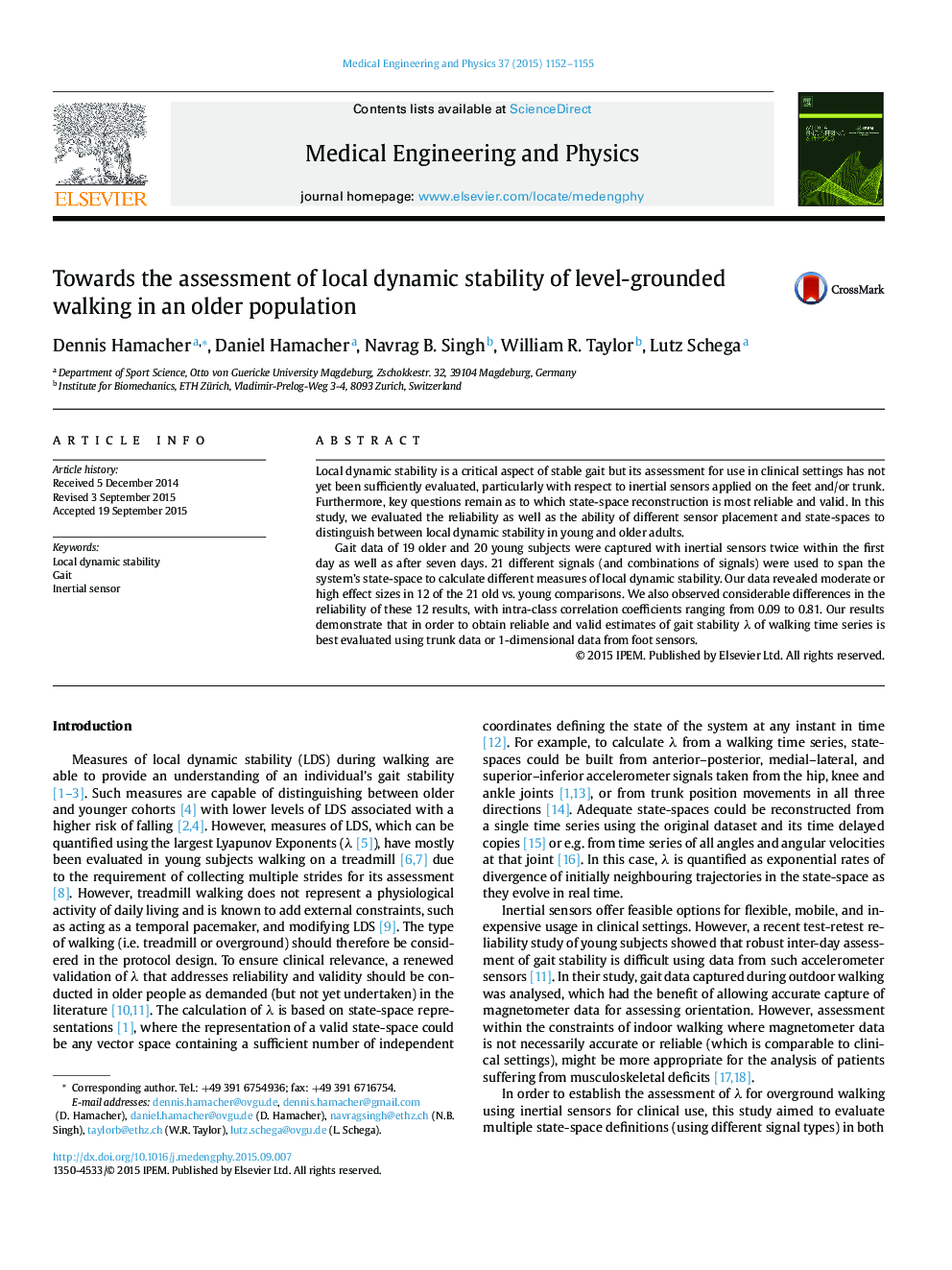| Article ID | Journal | Published Year | Pages | File Type |
|---|---|---|---|---|
| 875691 | Medical Engineering & Physics | 2015 | 4 Pages |
•Local dynamic stability (λ) is a critical aspect of stable gait.•Which state-space reconstruction for λ calculation is most eligible is unknown.•We evaluated reliability and validity of λ as a function of different state-spaces.•λ can be optimally achieved when data includes signals derived from trunk motions.
Local dynamic stability is a critical aspect of stable gait but its assessment for use in clinical settings has not yet been sufficiently evaluated, particularly with respect to inertial sensors applied on the feet and/or trunk. Furthermore, key questions remain as to which state-space reconstruction is most reliable and valid. In this study, we evaluated the reliability as well as the ability of different sensor placement and state-spaces to distinguish between local dynamic stability in young and older adults.Gait data of 19 older and 20 young subjects were captured with inertial sensors twice within the first day as well as after seven days. 21 different signals (and combinations of signals) were used to span the system's state-space to calculate different measures of local dynamic stability. Our data revealed moderate or high effect sizes in 12 of the 21 old vs. young comparisons. We also observed considerable differences in the reliability of these 12 results, with intra-class correlation coefficients ranging from 0.09 to 0.81. Our results demonstrate that in order to obtain reliable and valid estimates of gait stability λ of walking time series is best evaluated using trunk data or 1-dimensional data from foot sensors.
